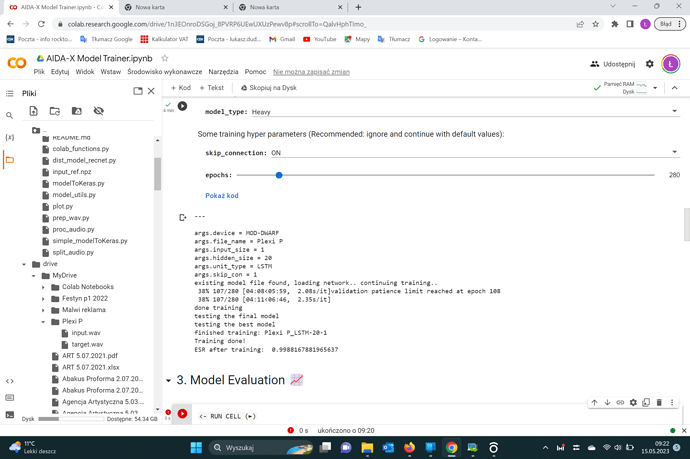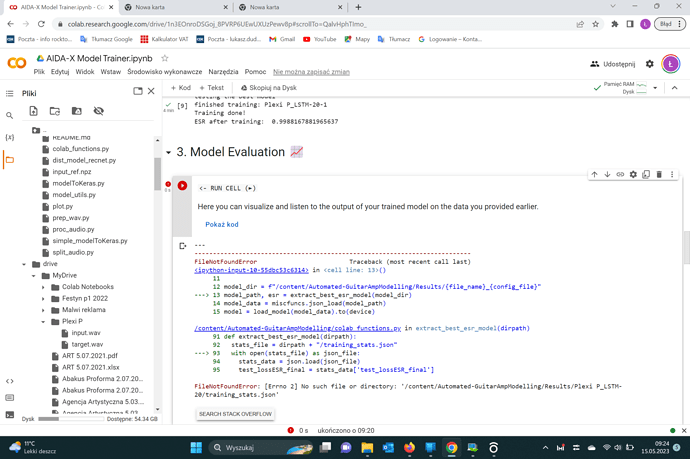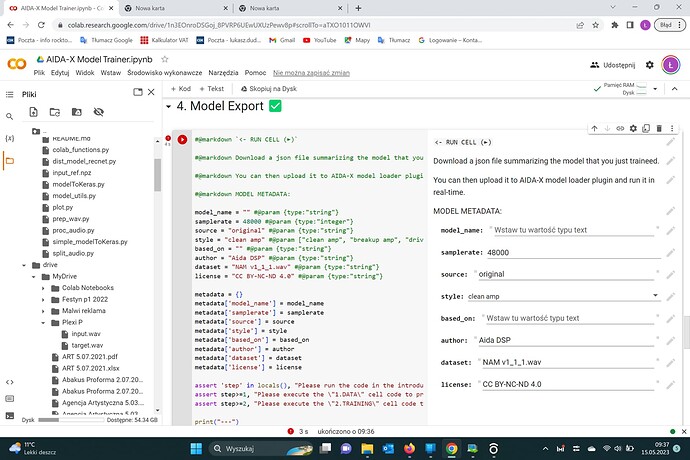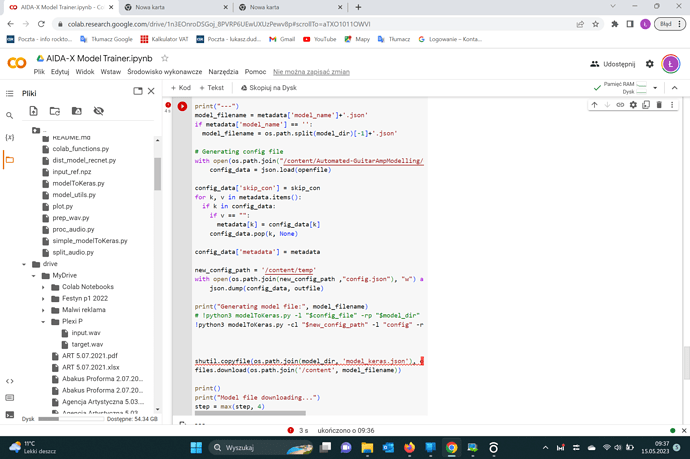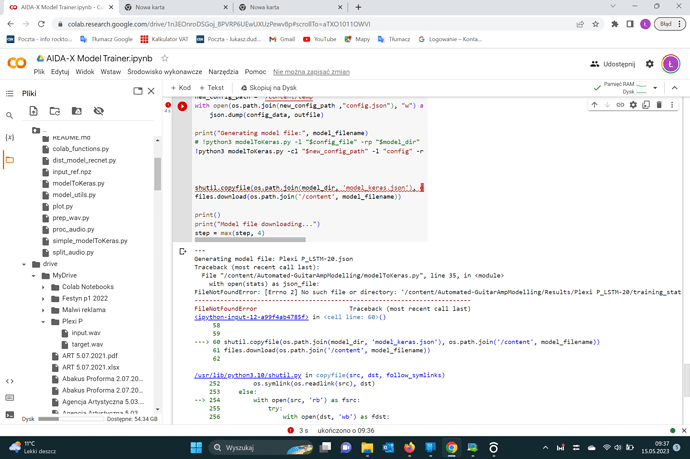Should we suggest that people delete their results folder after creating a model?
(as a cleanup courtesy but also to avoid influencing their results if they do a new attempt on a model?)
no. The script should just create a new folder automatically. Easy to do for @itskais I think.
I tried deleting the file but it didn`t work…It stopped in epoch 80 and made a bad file 0,9 esr.
I think it needs a script modification…
If you’d like you could send me the input and target waves and I try it with my local script.
Thanks but i disconnected and i did it all again and it was ok.I also want to check the levels and try to bring them closer to normal guitar input.
We can add a reset function in the first cell, to delete the already trained model folders if one wants to train a new model ^^
Yes that would be great!Thanks!!
I try to make some training but after uploading the files (input, target), I can not find them anywhere. They seems to be uploaded but where are they?
(Edit) - It does not work with mozilla, runs on Chrome.
The training is done - and it seems everything is ok:
but when I go to further steps there is an error - any idea what I make wrong?
look at this thread
I’ve been really interested in doing some modelling of some pedals, just had to borrow a reamp box.
It’s only just dawned on me that I could just use a DI before the pedal and a DI after. I have a Jad Freer Capo which is already configured with a clean DI of the bass and a DI with my preamps and drives ![]()
Serves me right for not reading the guide! I’d assumed there would be a some kind of special input signal that would be used rather than just a guitar signal.
Is there a benefit to using raw guitar as an input for training rather than a specialised signal that sweeps through frequencies and volume etc?
A few uninformed guesses:
- Not everyone has equipment ready for streaming an audio file into their hardware
- A full volume and frequency sweep might produce significantly more weights/parameters to store in the model and require more CPU to run, even if you’re only using a fraction of spectrum captured in your playing.
- A volume and freq sweep doesn’t capture many of the techniques that guitar players use to alter their tone and dynamics like bends, slides, mutes, polyphony / chords, attack / picking style. These can vary greatly from player to player. If your gig is wailing on low power chords, you probably don’t need the model “cluttered” with response data for bending the high E string.
Yeah makes a lot of sense!
Going to have a play with different guitar/bass combinations and see what works best. Not needing a reamp box makes it significantly easier!
the dataset does not influence how many weights are saved and how much CPU it consumes. That is consistent with the network/configs you choose.
absolutly correct. You could even go that far and have a model of you bass sound for every specific song/type of music. Record a dataset and train it with that.
Super useful, so the goal should be to create a personalised dataset based on your playing and requirements etc.
For context I’m planning on experimenting with modelling 3 pedals, possibly combinations of them that I commonly use so that I can run it with a single AIDA-X module.
I was trying to get my head around how I could best get a model that would work for both but tbh sounds like I’ll probably get better results having specific guitar and bass versions.
Hopefully will get chance to play tomorrow. Got a pretty good idea now of what my first approaches will be now, thank you!
This exactly matches my experience ( and post too)
